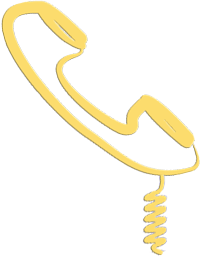What is a Standard Detox?
Often, people interchange the word detox with rehab. A detox, properly defined, is a time when a person stops the use of any mind-altering substance. It is when the body and mind get accustomed to not having the drug. A person undergoing a standard detox will have no or very little medication or medical monitoring. Depending on the individual and their drug of choice, this step can take a couple of days to a week or two.
It is a preliminary step, and a person should follow with further treatment. Residential rehabilitation, outpatient counselling, or support groups are a must. Rehab, as such, is the process of getting the person to make life changes and addressing the root causes of addiction to promote long-term recovery. You can learn more about this method here.
Determining Non-medical or standard detox
Standard detox is not for everyone. It is essential to note that this detox is not for those who have a history of heavy and prolonged substance use. For example, withdrawal from alcohol can be life-threatening and may lead to serious complications, including seizures and delirium tremens. Find out more about medically assisted detox and the cases that require this process.
Before starting the detox process, individuals undergo a comprehensive assessment. It’s an important step to evaluate the extent of their substance use, overall health, and any co-occurring medical or mental health conditions. The information gathered helps tailor the detox plan to the individual’s specific needs.
Someone with a light alcohol problem or whose substance is crack, cocaine, or pot will most likely not need medical detox unless they have a physical condition that puts their life at risk.
Withdrawal from Substances
Stopping all drugs, illicit or prescription, including alcohol, will cause side effects. These include common symptoms like,
- mental and physical discomforts,
- sleep disturbances or insomnia,
- nausea,
- sweating,
- anxiety,
- tremors,
- aches and shakes.
More intense symptoms for heavier cases or dependent on the drug will be,
- hallucinations,
- seizures, and
- psychosis.
These are expected and depend on the substance used and the level of dependence. Also, some people will have more difficulty than others because of overall health and tolerance.
The Process of Withdrawal
There are a number of different processes used for detox. This step can be difficult for some who are more vulnerable to the cravings. Here are a few methods and their description.
On Your Own
Many people can withdraw on their own. This circumstance is more fitting for someone with a light and short-term problem. Slowly weaning off the drug is one way to minimize withdrawal symptoms. Please don’t try this if you are a heavy drug user; you may put your life at risk. You can also set yourself up for a fail.

Some people can stop their usage cold turkey. Keeping the mind busy with something pleasurable and going for walks to extrovert attention are good starting points. Taking baths in Epsom Salts for cramps and tension is another great way to do it on your own. Seeking an environment surrounded by people who are drug-free or are in successful recovery is also very important. But if you find it too difficult, please seek help.
Natural
Natural detox is the process of withdrawing someone without medication and solely with exercise and the use of vitamins and minerals to supplement the body. The philosophy behind this approach is that drugs, including alcohol, burn the natural elements of the body. By supplying vitamins and minerals, the body does not react as heavily to the cessation of the substances and builds back to health faster. Someone should only do this approach through a drug and vitamin specialist after a thorough assessment.
Standard
As mentioned above, it is detox done with little or no medical supervision and entails, when necessary, “soft” medication to alleviate symptoms.
Medical
Medical detoxification is mentioned above; you can follow the link provided to learn more about it.
Medication-Assisted Treatment, MAT
The medications used in MAT help to alleviate withdrawal symptoms and reduce cravings. It also blocks the effects of the specific drugs. People use it mainly to treat opioid use disorders (OUD) and alcohol use disorders (AUD).
MAT aims to minimize the risk of relapse and support individuals in their efforts to achieve and maintain recovery with the help of counselling, therapy, and support groups.
The decision to use MAT is made collaboratively between the individual and their healthcare provider or addiction counsellor. Taking into account the specific circumstances and needs of the person seeking treatment is important. MAT can be a successful recovery approach when one has failed repeatedly in recovery. In some cases, it may be used as a long-term maintenance strategy, providing ongoing support to help prevent relapse.
In Conclusion
A person may be able to withdraw on their own, but this method is reserved for people with light addiction problems and with a short history of consumption. Regular detox is withdrawal management done with minimal medical supervision. In contrast, medical detox is for those with a long history of substance use disorder or with a medical condition that could jeopardize their well-being. And lastly but not least, medication-assisted treatment (MAT) is for those who have attempted several recovery programs but find it hard to overcome cravings.
A person should have a thorough assessment to get the appropriate service for their unique needs and situation.

Carole Pelland
Substance Abuse
Digital Marketing Administrator
& Author

